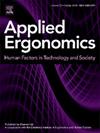生成式AI响应随处可见;让它们计数是一个挑战——使用分层贝叶斯回归模型评估医疗聊天机器人中的信息表示风格
IF 3.4
2区 工程技术
Q2 ENGINEERING, INDUSTRIAL
引用次数: 0
摘要
大型语言模型的出现为通过基于web的医疗保健聊天机器人提供有效的医疗保健信息提供了新的机会。卫生信息通常是复杂和技术性的,因此设计有效满足用户需求的人机交互至关重要。采用2x2受试者之间的设计,我们控制了两个独立变量:沟通风格(会话与信息)和语言风格(技术与非技术)。我们使用层次贝叶斯回归模型来评估不同的信息呈现风格对有效性、可信度和可用性的影响。研究结果显示,对低可用性的看法显著降低了医疗聊天机器人的有效性。此外,接触聊天机器人会话风格的参与者明显更有可能认为它具有更高的可用性,但也更有可能不那么信任聊天机器人。这些结果表明,不同的信息呈现风格会影响用户体验,并为医疗聊天机器人和其他人工智能系统的未来研究提供了见解。本文章由计算机程序翻译,如有差异,请以英文原文为准。
Generative AI responses are a dime a dozen; Making them count is the challenge – Evaluating information presentation styles in healthcare chatbots using hierarchical Bayesian regression models
The emergence of large language models offers new opportunities to deliver effective healthcare information through web-based healthcare chatbots. Health information is often complex and technical, making it crucial to design human-AI interactions that effectively meet user needs. Employing a 2x2 between subjects design, we controlled for two independent variables: communication style (conversational vs. informative) and language style (technical vs. non-technical). We used hierarchical Bayesian regression models to assess the impact varying information presentation styles on effectiveness, trustworthiness, and usability. The findings revealed perceptions of low usability significantly decreased the effectiveness of the healthcare chatbot. Additionally, participants exposed to the conversational style of the chatbot had significantly increased likelihoods to perceive it with higher usability but were also more likely to be less trusting of the chatbot. These results indicate varying information presentation styles can impact user experience and offers insights for future research with healthcare chatbots and other AI systems.
求助全文
通过发布文献求助,成功后即可免费获取论文全文。
去求助
来源期刊

Applied Ergonomics
工程技术-工程:工业
CiteScore
7.50
自引率
9.40%
发文量
248
审稿时长
53 days
期刊介绍:
Applied Ergonomics is aimed at ergonomists and all those interested in applying ergonomics/human factors in the design, planning and management of technical and social systems at work or leisure. Readership is truly international with subscribers in over 50 countries. Professionals for whom Applied Ergonomics is of interest include: ergonomists, designers, industrial engineers, health and safety specialists, systems engineers, design engineers, organizational psychologists, occupational health specialists and human-computer interaction specialists.
 求助内容:
求助内容: 应助结果提醒方式:
应助结果提醒方式:


